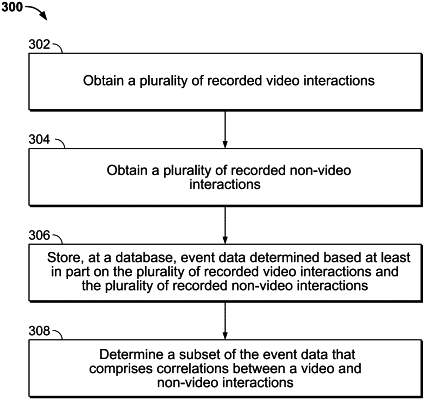| CPC G06F 16/735 (2019.01) [G06F 16/71 (2019.01); G06F 16/75 (2019.01)] | 18 Claims |

|
1. A system, comprising:
a processor configured to:
obtain a plurality of recorded video interactions;
obtain a plurality of recorded non-video interactions;
store, at a database, event data determined based at least in part on the plurality of recorded video interactions and the plurality of recorded non-video interactions, wherein the database comprises a plurality of storage nodes; and
determine a subset of the event data that comprises correlations between a video and non-video interactions, wherein to determine the subset of the event data that comprises correlations between the video and the non-video interactions comprises to:
receive a request to determine correlation values between a given set of videos and non-video category identifiers (IDs);
search the database for a set of video event data that describes a set of panelist IDs' interactions with the given set of videos, wherein data entries pertaining to a same panelist ID are stored contiguously on a single storage node from the plurality of storage nodes;
search the database for a set of non-video event data that describes the set of panelist IDs' interactions with the non-video category IDs;
for a non-video category ID included in the set of non-video event data, determine an overlap value comprising a number of distinct panelist IDs that have interacted with the given set of videos and have performed interactions associated with the non-video category ID within an attribution window;
determine a respective correlation value between the given set of videos and the non-video category ID based at least in part on the overlap value; and
output, at a user interface, the non-video category ID in a ranked list of at least a portion of the non-video category IDs based on the respective correlation value between the given set of videos and the non-video category ID; and
a memory coupled to the processor and configured to provide the processor with instructions.
|